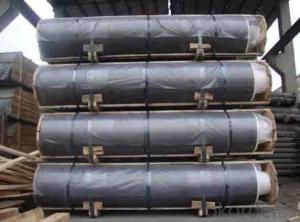When we talk about the graphite electrode market, we’re diving into a world that’s as fascinating as it is complex. It’s a realm where innovation meets industry, and where the global trends shape the future of manufacturing. So, let’s cut to the chase and get right into the heart of the matter.
The graphite electrode market is no stranger to fluctuations. It’s a dynamic landscape that’s influenced by a myriad of factors, from economic shifts to technological advancements. Over the past few years, we’ve seen a surge in demand for graphite electrodes, particularly in the steel industry, where they play a crucial role in the electric arc furnace process. This demand has been fueled by the global push towards urbanization and industrialization, as more and more steel is needed to build the infrastructure that supports our growing cities and industries.
But it’s not just the steel industry that’s driving the graphite electrode market. The rise of electric vehicles has also had a significant impact. With the world moving towards greener energy solutions, the need for efficient batteries has never been greater. Graphite electrodes are a key component in the production of these batteries, making them an essential part of the clean energy revolution.
Now, let’s talk about the players in this market. The competition is fierce, with major producers from China, Japan, and the United States leading the charge. These companies are constantly innovating and expanding their production capabilities to meet the growing demand. However, they’re not just competing with each other; they’re also facing challenges from new market entrants and changing regulations that can impact their operations.
One of the most significant trends we’re seeing is the move towards higher-purity graphite electrodes. As industries become more environmentally conscious, the need for cleaner, more efficient materials is on the rise. This has led to a shift in the market, with producers focusing on developing and manufacturing higher-purity graphite electrodes that meet these new standards.
Another trend that can’t be ignored is the impact of recycling. As the world becomes more aware of the need to reduce waste and recycle materials, the graphite electrode market is adapting. We’re seeing an increase in the recycling of used graphite electrodes, which not only helps to reduce environmental impact but also provides a valuable source of raw materials for the industry.
But it’s not all smooth sailing. The graphite electrode market faces its fair share of challenges. One of the biggest is the volatility of raw material prices. The cost of graphite, a key component in the production of these electrodes, can fluctuate wildly, making it difficult for companies to predict and manage their costs. This can lead to price instability in the market, which can be a real headache for manufacturers and consumers alike.
Then there’s the issue of supply chain disruptions. With the ongoing COVID-19 pandemic, we’ve seen global supply chains take a hit, affecting the availability of raw materials and the production of graphite electrodes. This has led to delays and increased costs, further complicating the market dynamics.
Despite these challenges, the future of the graphite electrode market looks promising. As the world continues to embrace greener energy solutions and the demand for electric vehicles grows, the need for graphite electrodes is only set to increase. The market is expected to grow at a steady pace, with new opportunities emerging in various industries.
In conclusion, the graphite electrode market is a vibrant and ever-evolving industry that’s integral to our modern world. It’s a market that’s driven by innovation, shaped by global trends, and challenged by economic and environmental factors. As we move forward, it will be interesting to see how the market adapts and grows to meet the needs of a changing world.

